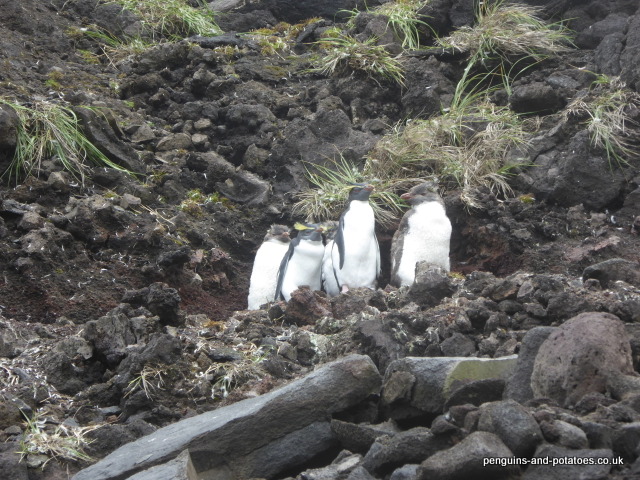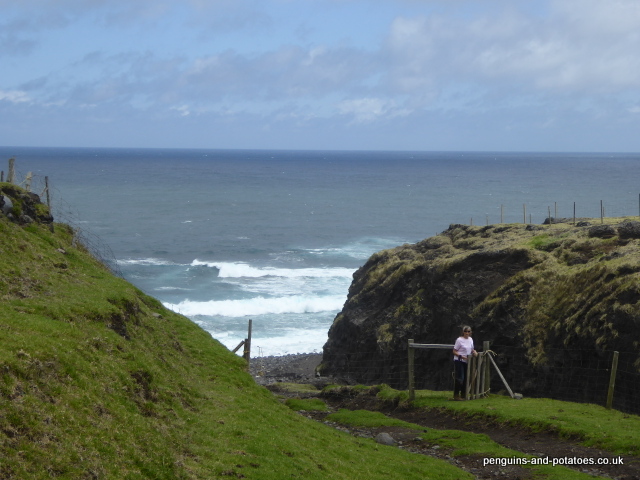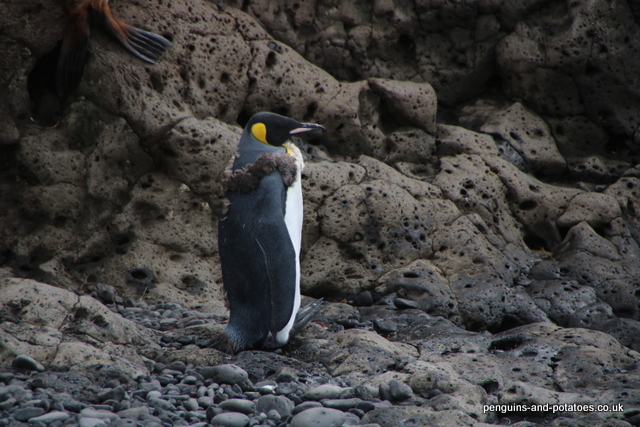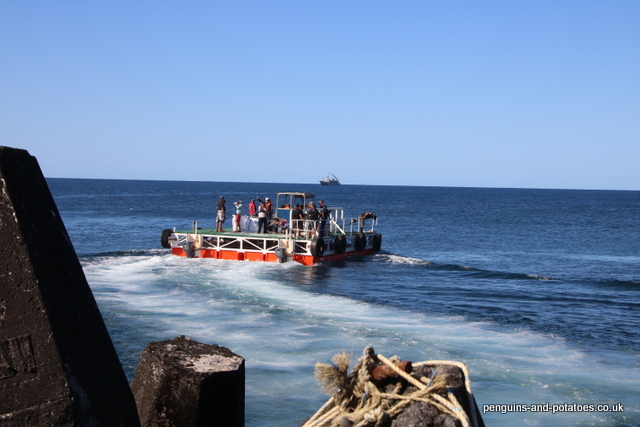Firstly, it is time to apologise. The process of getting these ‘letters from Tristan’ onto the site is a slightly protracted one, and we have been having problems. The last time I myself was able to put the blog onto the website was when we were in Cape Town, three months ago. It is out of the question to do it from here – the internet system is not nearly good enough. So I have had to do it the long-winded way. I write the posts and I edit the photographs, reducing them in size and adding the water-mark and a caption. Then this all gets emailed to a friend in the UK, two at a time as far as the photographs are concerned. This is the same process that even the Tristan News website has to go through. Then my friend finds time in his busy diary to spend the 15 minutes needed to put it all on WordPress. Trouble is, he has become even busier. Hence, for example, poor Nena and Mike’s wedding had to wait four weeks before my contact was able to get the blog published. The knock-on effect of this has been that my creative pen has been put to one side, so as not to create a huge log-jam of posts!
Apologies for this. Hopefully we are sorted now and there will be a regular flow of observations from these remote shores.

We had a three-week visit from a team from the National Geographic, which will probably have far-reaching consequences for the Island. This was largely a research visit, as part of their Pristine Seas project. The team travelled on a chartered ship called Grenville, and they spent their three weeks on and around the four main islands (Tristan, Nightingale, Inaccessible and Gough Islands)
As you may expect from the Pristine Seas title, the scientists on board focussed very largely on the seas around the islands. A huge range of scientific processes were carried out, and there seemed to be specialists in everything imaginable. Not surprisingly, one of the main conclusions was that the seas around the islands of Tristan da Cunha are in extremely good health, outstandingly so when compared with anywhere else that they have done these studies so far. I say ‘not surprisingly’ because we are a dot in the middle of the southern Atlantic Ocean, with a tiny permanent population of 263 persons for a sea area of thousands of square miles, and with the only exploitation being a crayfish industry working to a managed quota system and the very occasional ship being allowed under licence to fish for pelagic fish (always with an observer from the Tristan Fisheries Department on board) The waters should be pristine!

The team included a top-level film crew, and the aim is to produce film footage of Tristan which is likely to go global later in the year. It is for this reason that I mentioned ‘far reaching consequences’, for it seems likely that the image and reputation of the island will be greatly enhanced. We were all invited to a presentation in Prince Philip Hall on their final night, with a short film summary of the three weeks they spent and short technical summaries from the leading specialists. The idea is that some of the team come back later in the year to share with us all the meat of their findings, and finished footage of their filming. We are so much looking forward to this, and I will place on this website details of when their details will appear on television.

One important feature of the National Geographic visit was that they enjoyed exceptional weather! They had factored in a 40% weather-related down-time in their planning – but in reality they were able to operate 100% of the time. This meant that they were able to achieve far more than they had hoped, and the film crew nearly ran out of digital memory!!
The team managed nearly 300 dives during their three weeks. On every dive they sighted crayfish, which gives an idea as to how well-stocked these waters are. They also filmed a fish that remains unidentified – evidently a never-seen-before species, or one that is exceptionally rare. Also they saw a porbeagle shark, the first one ever seen in the Southern Atlantic. Readers on the west coast of Scotland will be very familiar with the porbeagle. Talking of sharks, they carried out a shark tagging programme (rather them than me!) These tags are implanted onto the shark’s side; after six months the tag is released from its implanted stem and floats to the surface, whereupon it tunes into a satellite and ‘calls home’ with all the data of its travels in six months, – where it has been and at what depth.

It was a pleasure to meet many of the National Geographic team, and we look forward to seeing them again.
I have a quick message. I cannot, of course, publish here my telephone number or email address. But, if anyone reading this would like to get in touch you can simply post a ‘Comment’, including your contact details and if possible prefixing it with ‘Do not publish’. I can then contact you. What happens is that WordPress send me by email all comments, and I authorise or reject each comment.
